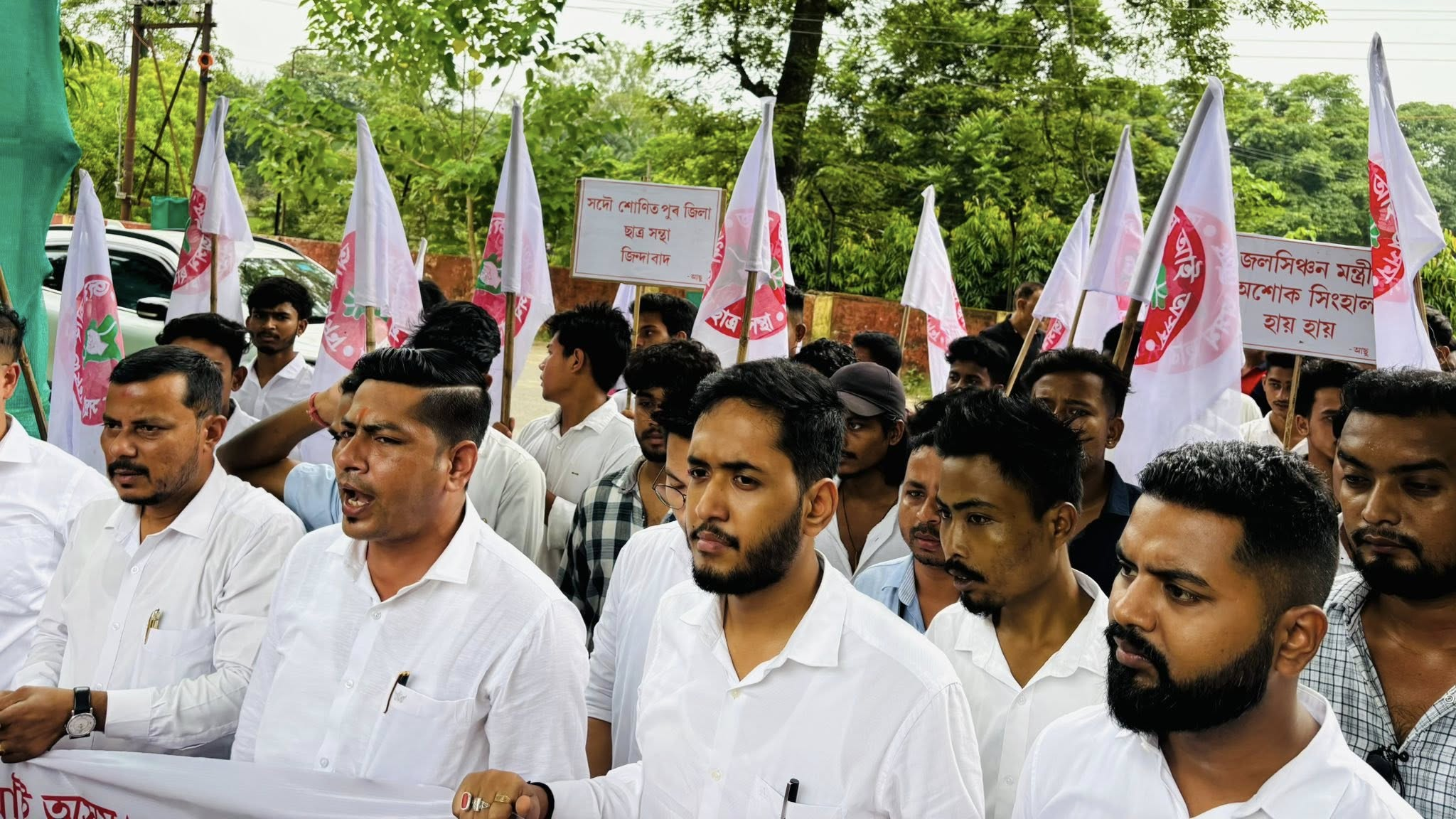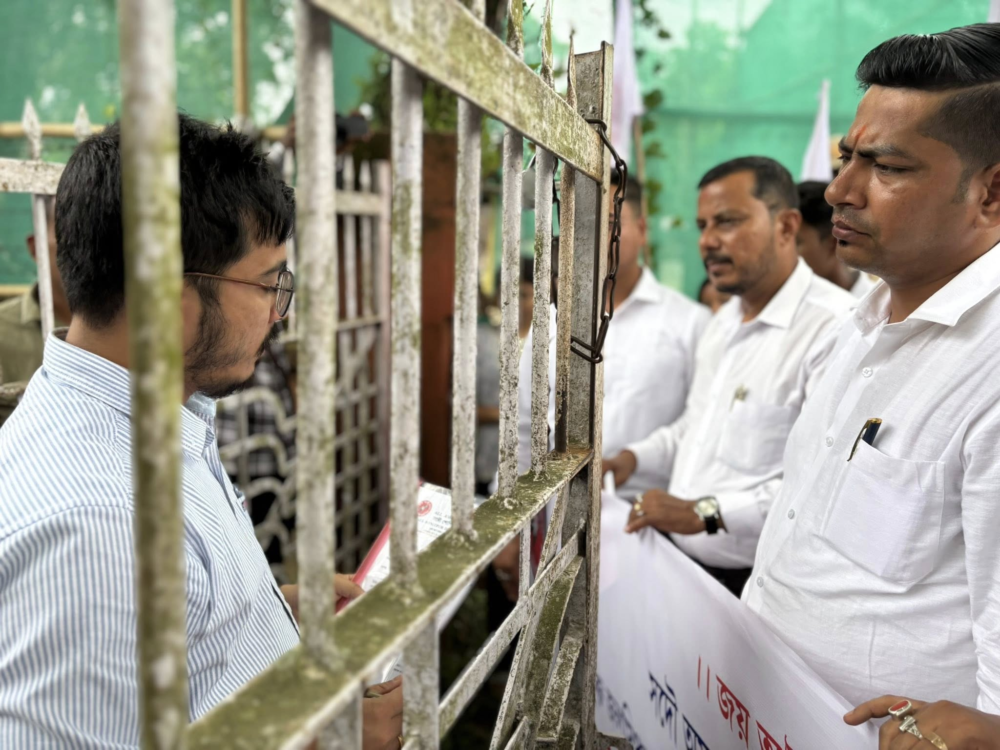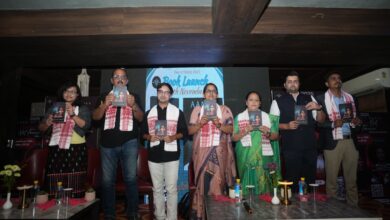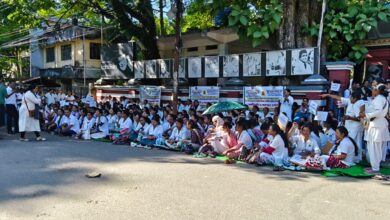
Tezpur, July 19, 2025 (Saturday): Students in Tezpur joined a statewide protest movement today, demanding better irrigation support for farmers as Assam battles its worst drought in recent years. The All Sonitpur District Students’ Union staged a strong demonstration in front of the Irrigation Department office in Tezpur town, calling out the government’s failure to provide proper water supply to agricultural fields.
The protest in Tezpur was part of a larger movement led by the All Assam Students’ Union (AASU) across multiple districts. Students and local people are angry with the Irrigation Department, which is run by Minister Ashok Singhal. They blame the department for alleged mismanagement, corruption, and a lack of understanding of ground-level issues.

Assam is currently facing a serious water shortage during the most important time for paddy farming, known as Sali Kheti. The state has received 42% less rainfall than normal between June 1 and July 18, getting only 401.7 mm of rain compared to the usual 689.6 mm. On July 18 alone, rainfall was 83% below average.
This shortage has left paddy fields cracked and dry across the state. Without enough water for transplanting rice seedlings during this critical season, thousands of farmers may lose their entire harvest. Most farmers in Assam still depend heavily on rainwater since the irrigation system is not strong enough.
The student protests have spread across multiple districts, including Kamrup Metro, Bijni, Nalbari, Biswanath Chariali, Sonitpur, Chirang, Dibrugarh, Majuli, North Guwahati, Sonari, and Tinsukia. Demonstrations were held in major towns, including Guwahati. The Sonitpur District Students Union, under the banner of AASU, also responded to the statewide call by organizing a protest in Tezpur and submitting a memorandum to local officials as part of the unified movement. AASU members surrounded the Irrigation Department office in Tezpur and formally submitted the memorandum demanding urgent action.

The memorandum submitted by the protesters included four key demands: immediate repair and activation of all non-functional tube-wells and low-lift pumps; declaration of drought-hit status for severely affected districts; compensation and crop insurance support for affected farmers; and accountability from irrigation officials for their failure to prepare for the crisis. These areas are all facing similar issues related to water shortages and inadequate irrigation support. The protesters are urging the irrigation department to take swift action before it becomes too late to save this year’s crop.
The drought problem is not limited to Assam alone. Four out of eight northeastern states are facing deficient rainfall during the peak monsoon period. Even Meghalaya, which is home to the world’s wettest place, has recorded 55% less rainfall than normal.
Interestingly, while northeast India struggles with dry conditions, the rest of the country has received 9% more rainfall than usual. This uneven distribution of monsoon rains has made the situation more challenging for farmers in the region.

The timing of this water crisis is particularly bad because agriculture in Assam depends mostly on rainfall due to weak irrigation systems. If the current cultivation window passes without proper water supply, even heavy rains later may not help farmers much, making the crisis even worse. The Tezpur protest highlights how local communities are standing up for farmers’ rights and demanding better government support during this difficult time.









